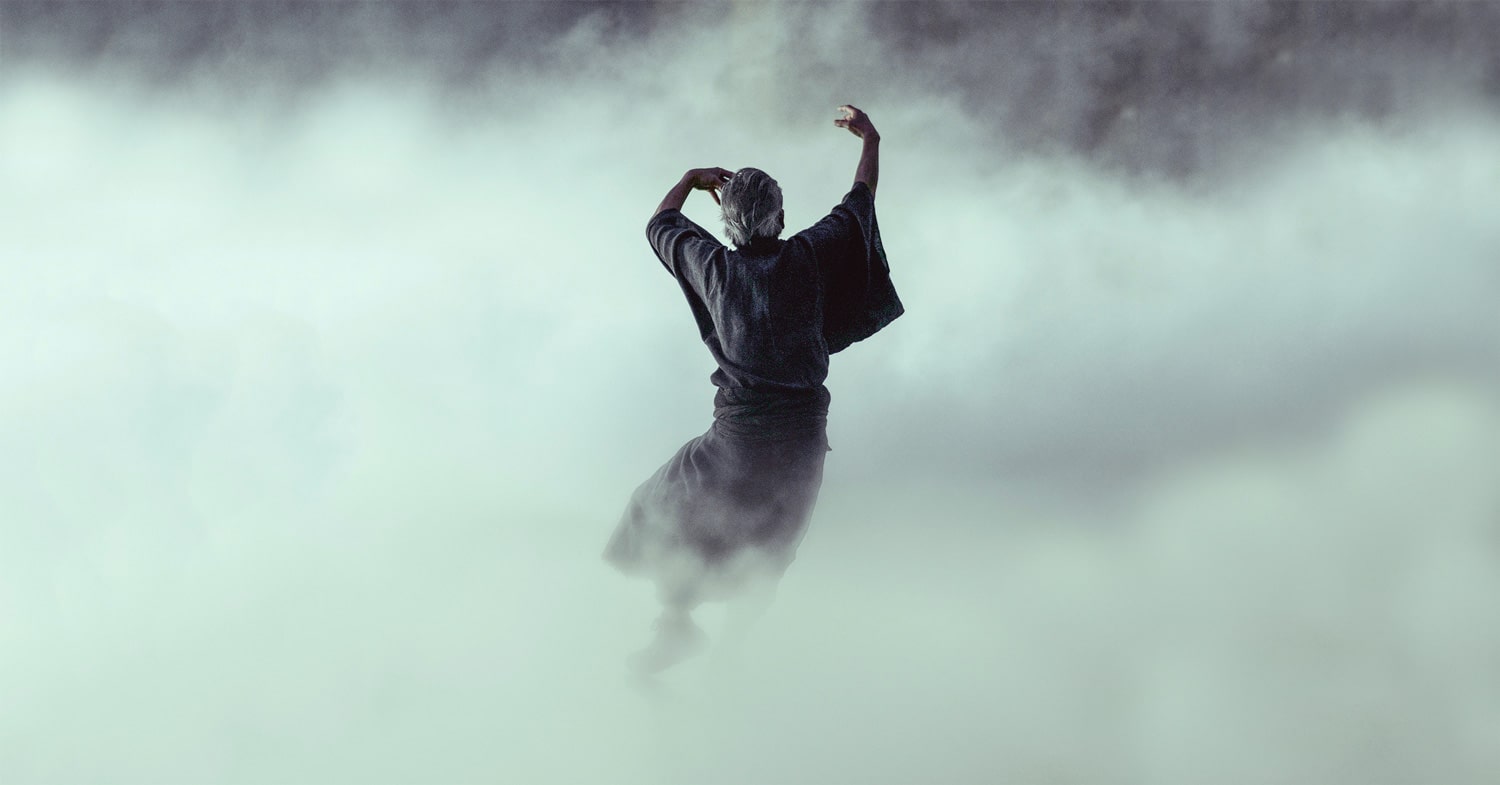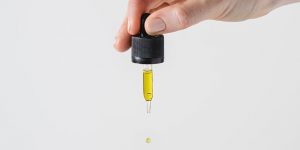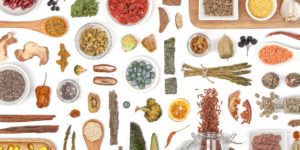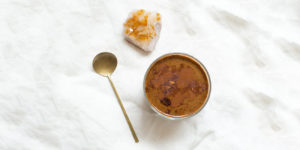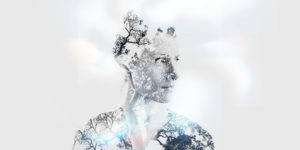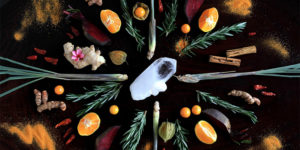Inner Alchemy: A Complete Guide to the Teachings of Taoist Philosophy on Health and Higher Consciousness
BY PEDRAM SHOJAI, OMD
Basic Taoist Beliefs and Theory
The Way gave birth to the One.
The One gave birth to the Two.
The Two gave birth to the Three.
And the Three gave birth to the ten thousand things.
— Lao Tzu, Tao Te Ching (translated by Thomas Cleary)
These complementary opposites exist in an ever-changing and ever-flowing dynamic state that constantly self-corrects and harmonizes. The ancient philosophers of China used the term Tao for the Supreme Ultimate or the universe as we know it. It is the All. In the beginning, there was Wu Wei, or the Great Emptiness, and from this came yin and yang.
Yin and Yang
This is one of the most popular Taoist beliefs. Everything in the universe has a yin and yang component to it, and all things have a balance point. For example, there would be no meaning to “up” if the concept of “down” didn’t exist. There is no “hot” without “cold” and so on. This primordial distinction not only relates to everything around us; it is also what fundamentally drives the motion within us. We, being an active functional aspect of nature, exemplify the same polar balancing; with sustained attention to this subject matter, we can find the Tao, or the balance point, in all things.
Essentially, there was the original state of the universe wherein all things were One. There was unity consciousness and eternal togetherness of all things—and then, BOOM! Polarization. All things all at once are now imbued with this elementary concept and this perception of separation. This is the mark of polarity. Now, it is critical to remember that these poles are the seemingly opposite characteristics of the same objects or things. This polarity gives us a dualistic view of the same phenomena. Yin and yang are constituent parts or mirror reflections of the same one, which is simply split into two, the same way a beam of light splits when hitting a prism. In the beginning and in the end, it is all Tao. Polarity is just the game we are playing.
The lists below show some basic examples of yin and yang to better illustrate this Taoism philosophy. These obvious examples will help further illustrate a point in our understanding of human nature—namely, the distinctions we make in our approach to self-growth and enlightenment.
Yin and Yang Examples
Yin: Earth,Cold, Down, Matter, Female, Passive, Soft, Body, Materialism, Science
Yang: Sun, Hot, Up, Energy, Male, Active, Hard, Spirit, Spiritualism, Religion
In our culture, we are either on one end or another. Either you work for Wall Street and drive the expensive car, or you wear patchouli and tour with the band. Either you are a Democrat or a Republican, for abortion or against it, patriotic or unpatriotic, with us or against us, and on and on. The mark of our society is that it is stained with the rigidity of dualistic thinking, and we suffer from its intolerance daily in our public discourse.
Gray Is Where All the Good Stuff Happens!
According to Taoist beliefs, gray is the fusion of black and white and of yin and yang. It is the understanding that there is balance, communication, and interaction with all things at all times. We in the United States live in a culture that was started by a group of religious fundamentalists (the Puritans), who essentially lived in a world of black and white. They were too much to handle for their contemporaries in Europe, and so they came to the New World to (conquer and) live their way of life. Sex was evil, and women were witches. Everything was black or white, and there was judgment all around. It was neither fun nor tolerant.
We are now living in the shadow of that polarized thinking, and the national discourse echoes that imbalance. The insanity of the Red Team-Blue Team mentality has allowed us to stray from our humanity and has really watered down the quality of human intellectual interaction, the meeting of ideas, and peaceful disagreement. Fundamentalism (in all religions and creeds) is a child of this imbalance; it is a reflection of our collective ignorance—our ignorance of the truth. To attain balance in the world outside of us, it is important to realize that we must first establish that state within ourselves. The external is simply a reflection of our internal state. Therefore, any balance we would like in our lives must come from a genuinely balanced state that originates from inside of us. We are the holographic projectors, and the “reality” we see beyond our flesh and blood is simply the reflection of our internal state. As the ancient alchemical axiom attributed to Hermes Trismegistus states, “As above, so below.”
Generally, Yin and yang, and other Taoism beliefs and practices, represent the totality of creation from opposite sides of each other. Together they are whole, and together there is balance. One cannot exist without the other, and we cannot examine anything without a balanced frame of reference, which requires looking at both sides and finding the middle. The polarity created by yin and yang can be compared to (if we so dare) the breath of life in biblical texts. At first, there is only Tao in this differentiation. Then, movement begins, and the energy of life starts to stir and revolve around itself, swirling the myriad things in the universe into being. It is as if a centrifugal and centripetal force erupted simultaneously, both creating and destroying, rising and falling, growing and decaying. In balance, the universe sustains itself and grows slowly in sentience and capacity. We can compare it to an oak tree. It grows a bit every year and then sheds weak branches in the autumn, which then become mulched as compost for the tree’s own growth the following season. The tree eventually grows so big that the main branches cannot support their own weight, and they collapse, only to become the soil for the seeds of its progeny to grow up strong and repeat the cycle.
The early Taoists learned everything from observing nature, deep introspection, inner energy cultivation, and development of gnosis. They discovered the principle of yin and yang to be the impetus and driving force of all life, and this concept is inextricably linked to the additional Taoism beliefs and practices we will discuss.
 Figure 1. Seasonal Interplay
Figure 1. Seasonal Interplay
Yin and yang can also be thought of as two inverted waves that are flowing along a central axis. In figure 1, we can see the interplay of the seasons and how they relate to the rising and falling tides of yin and yang. The equinox points are when the forces come together on the axis, and the solstices are at the extremes of one or the other.
If we then take this interplay and add an element of torsion or twisting into a three-dimensional model, we end up with something that looks the double helix of a DNA molecule, as shown in figure 2.
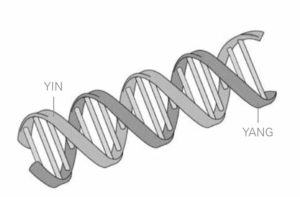 Figure 2. The Double Helix of DNA Resembles the Interplay of Yin and Yang
Figure 2. The Double Helix of DNA Resembles the Interplay of Yin and Yang
This double helix DNA serves as the information storehouse for all life on this planet, and the interplay of these strands dictates which proteins are synthesized and how we express physiologically in nature. So to, This remarkable dance between the polar forces directs the language of internal energetic communication and becomes the basis of much of our transformational work.
The Three Treasures
Once the universe is split into the polarized binary system of yin and yang, there arises a distinction between the different levels of material manifestation. If spirit and matter, which at the level of the Tao are one and the same, are separated with the birth of yin and yang, then we start to see a scale of densification versus illumination. Keep in mind that yin and yang are relative to each other, always. There is no absolute yin to speak of; things are only yin when compared with something else. We can say “hot” when it’s 100 degrees out, and we could say that this is very yang, but that assumes that an average day is, say, 72 degrees. A 100-degree day would certainly be more yang in this instance. But what if we compared that to a 350-degree oven or the surface of the sun? The 100-degree day would be more yin compared to these. There is a density “gradient” from spirit to matter in which matter is more dense than spirit.
Now, taking this gradient as an example, we can hold it as a frame of reference for the Taoist understanding of the Three Treasures: jing, qi, and shen. The Three Treasures also can be organized on a density gradient, with jing being the most yin, or most dense, and shen being the most yang, or least dense.
Per the teachings of Taoism, the polarization of spirit and essence creates the currency of life (the qi energy). It is the medium or language of communication of All That Is. This is why it is so powerful to work with qi. When we understand the dynamics of qi flow in our body, we can begin the alchemical process of bringing the poles of spirit and essence back to a balanced equilibrium. In the duality-free stillness, we have direct access to the zero-point energy field and are capable of rewriting the code of how we manifest in three dimensions via our DNA.
A useful example is to compare these Three Treasures to a candle, wherein the wax is the essence (jing), the flame is the energy (qi), and the aura around the flame is the spirit (shen). The goal is to preserve the essence (wax) and sustain a healthy flow of energy (flame) so that the spirit (aura) can soar. This is a very simplistic example, and much more will be said about this. But before we go there, let’s look at each of the Three Treasures individually.
JING: ESSENCE
Jing is the essential vitality that is stored in our body. Remember, the Taoist understanding of reality is intimately tied to the internal understanding of our body and the movement of the life force through us. To understand these dynamics is to gain enlightenment universally. Jing is the most yin of the three treasures, and it represents the core of our material existence. It is a most precious substance that is to be cherished and guarded.
Very similar to the way that polarity created the spectrum of energy to matter, the essence is differentiated as well. The Taoist belief is that we have our “pre-heaven” essence, our “post-heaven” essence, and our “day-to-day” essence.
Pre-Heaven Essence
The pre-heaven essence comes from the blending of the sexual energies of our biological parents. This energy nourishes the embryo and the fetus during pregnancy and essentially comes downstream from our ancestral DNA. It determines our individual, constitutional makeup, strength, and vitality and is what makes us each unique. It’s the hand we’ve been dealt by our parents. A tremendous amount of history, information, and karma comes through our bloodlines via the DNA that gets registered at this level of our essence. Some people are blessed, and many others come in with a number of challenges in regard to this. Now, this is the aspect of the essence that’s the hardest to increase, and much of the information in my book Inner Alchemy will unlock the secrets of how we can do just that through the practice of qi gong. This is an integral piece of the puzzle that must be addressed in our energetic cultivation.
Post-Heaven Essence
In Taoism, the post-heaven essence is attributed to our lifestyles and is quite changeable. It is what we derive from foods and fluids after birth. It’s what we do with ourselves once we’ve come into the world. It has a lot to do with early-stage development and the quality of our nourishment from our birth onward. There is a great deal to say about this topic in regard to healthy bacterial colonies in the gut, breastfeeding, quality of foods, and the loving environment a child is brought into.
We can’t really help what happened before conception or during our infantile development (though, of course, we can do so for our children), but we certainly can help what we do with it from there. This aspect of the essence really can be cultivated and positively affected by lifestyle and practice. In fact, a critical aspect of our practice is to continually refine our essence and increase the amount of condensed jing to work with.
Day-to-Day Essence
If we were to use money as a metaphor, the pre-heaven essence would be a locked-away family trust account that we know is there yet is relatively inaccessible in our day-to-day dealings. Our post-heaven essence would be our money market savings account; we can tap into it—but at a price. And then our day-to-day essence would be our checking account, being deposited to and drawn upon daily for our various needs.
Being derived from the other two types of essence, the day-to-day variety can tap into both the pre-and post-heaven reserves and replenish itself. It serves as the body’s primary backup system. It acts as the reinforcement for all the body’s energies, like a backup battery, supporting our systems when there is an outage. You can also think of it as the overdraft protection on your checking account. It is critical to keep this system healthy for day-to-day functioning in order to maintain health. If we want to enhance our health and state of being, then that is where the Taoist beliefs and practices offered in my book Inner Alchemy serve their purpose. We shouldn’t be just making ends meet every day; instead, we must be in a state of relative overflow and abundance. This will then give us the energy we need to cultivate strong light bodies and open up our perception.
So, although this form of essence is the easiest to access and can be more readily restored, it is still considered jing in the scale of density. It is the baseline backup system for the qi, or energy flow, of the body. Going back to our money metaphor, in relation to the other aspects of essence, our day-to-day is more liquid; however, in relation to our qi or energy flow, it is like a fixed savings account. Again, notice how yin and yang are always relative and how they create a spectrum for comparison. Essence is denser than energy and is therefore less “liquid” in cash flow terms. Our essence is our equity. Yes, we can borrow against it—but at a cost. The point is to store it up and create an endowment that propels us into eternity.
QI: ENERGY
Moving up in refinement from the denser essence, we have our second Treasure, which is our energy. This primary Taoist belief and concept can be likened to all the metabolic and physiological processes in the body that are constantly running. This qi energy is the currency of life. It is always moving and in flux. It is traveling through an energetic matrix or network of channels throughout the body, called the meridians. The Taoist masters knew about these pathways of energy flow for thousands of years; in fact, these pathways are the basis for the practice of acupuncture.
Taking the example of the candle, the energy is the flame; it is what sets things in motion. An unlit candle can be considered potential energy, but it takes that spark of life to get things moving and really make a candle fulfill its purpose, which, in this case, would be to light up a room. Our energy works in very much the same way. It is the life force that comes into a fertilized embryo (once spirit is imbued with matter) that really gets the show on the road; that same energy carries us through our adult lives, helping to fulfill our purpose.
Based on Taoism history, the ancient Taoist masters spent countless hours meditating, cultivating, and studying these phenomena. From them, we have come to understand that there are several types or qualities of this energy to speak of.
Original Qi
This form of energy is essentially the energetic equivalent of essence. It is essence transformed into energy. Being a dynamic and rarified form of pre-heaven essence, it is essentially the foundation of all the yin and yang energies of the body. The original qi serves many purposes in the body; it is almost like a fire starter. When other forms of energy are incorporated into the system, it is this original qi that “activates” them and sets things in motion. In turn, this energy is constantly nourished and replenished by the other post-heaven sources of energy, which we are about to discuss. This original qi is housed in the “gate of vitality,” between the two kidneys, and becomes a very important and active agent in our practice of qi gong.
Food Qi
As the name suggests, food qi is the energy we derive from the food we eat. This is the essential first step to having healthy energy flow in the body, and it stresses the importance of having a clean and healthy diet. This is where the stomach receives and the spleen (and the pancreas) transforms our food into a usable form of energy, which it then raises up to the lungs to mix with air.
Gathering Qi
This form of energy, which is housed in the chest, is derived from the food qi mixing with air. Once the raw ingredients from ingested food are assimilated, they need to mix with air to form gathering qi. This idea really stands as a testament to the genius of the ancient Chinese Taoists. In modern biochemistry, we know that in part of the Krebs cycle, there is an incredible symbiotic relationship with a part of our cells called mitochondria that creates what we call the electron transport chain. Essentially, the mitochondria are part of an energy accelerator in our cells that allows us to use oxygen in a very dynamic process to help extract incredible amounts of energy out of simple sugars. Prior to Taoism philosophy, all life on this planet worked anaerobically (without the use of oxygen); the evolution of this cycle enabled eukaryotic cells (of which we mainly consist) to develop efficient energy-extraction systems. This was the beginning of the evolutionary pathway to more elaborate and complicated multicellular structures, of which we are the end result (as many would argue). Although the ancient Taoists did not speak in this language, they could literally see how these energetic currents moved through the human body; they developed a complicated and very accurate model to describe it.
This gathering qi serves to nourish the heart and lungs; it also flows downward to aid the kidneys. It is just as important as the energy we derive from food, and it becomes the emphasis of much of our qi gong, or energy work. The cultivation of energy and healthy oxygenation of the system are intricately tied to one another.
True Qi
True qi is the form of energy that is the end product of the aforementioned processes. When the gathering qi is formed, it is activated by the original qi (which we called the fire starter); from this interaction, true qi results. True qi is the undifferentiated form of energy in the body that then branches off to perform the various functions required by the system. Per Taoist beliefs, this energy takes on two forms in the body: the nutritive qi and the defensive qi.
+ Nutritive qi: This is the type of energy that circulates internally and nourishes all the internal organs. It is closely related with the blood and, in fact, flows with the blood to bring energy to all the systems of the body. There is nothing in the body that does not interface with this form of energy, as it is the main “currency” of internal nourishment. Think of the true qi as the total revenues a country gets from taxes (food, air, water, and essence). In this example, nutritive qi would be the domestic spending on cities, bridges, infrastructure, hospitals, and so forth. It is designed to nourish the interior.
+ Defensive qi: If the nutritive qi is the domestic spending, then this form of energy is the armed forces and border patrol. It protects the exterior from pathogenic invasion and regulates body temperature by controlling the opening and closing of pores on the skin. It is truly the gatekeeper to the body and needs to remain charged and healthy in order to keep us protected. In fact, at any given time, we are surrounded by billions of hostile microorganisms that would quickly invade and devastate our system if it were not for this form of energy. Defensive qi regulates immunity through the skin and mucous membranes and is itself regulated by the lungs, while also being supported by the essence and original qi. It sounds complicated, but it really isn’t too bad.
This basic system, illustrated in figure 3, very adequately explains the flow of how the body’s energies develop and are maintained. It also paints a picture of the complexity of the process. It is almost impossible to routinely eat terrible foods and successfully practice energy cultivation, because the food qi sits at the foundation of this entire process. It is also important to note that this system of interrelated energies is very much like an ecosystem that needs to be maintained. A weak defensive qi will either come from a weak true qi level or, if it has simply weakened through continual assault, will eventually drain the true qi, which backs it up at the expense of the nutritive qi.
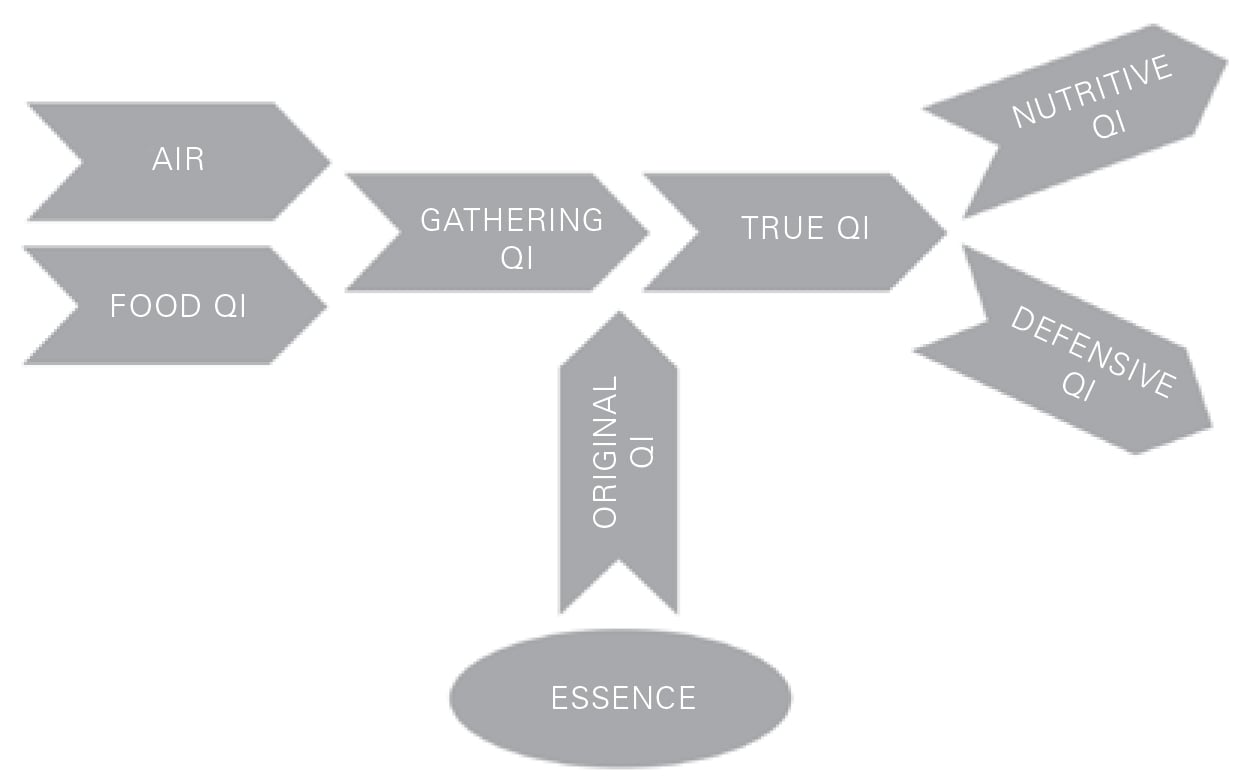 Figure 3. The Creation of Qi in the Body
Figure 3. The Creation of Qi in the Body
Let’s take this example on the macro scale. We have a whole host of problems in a country that can no longer pay for domestic programs (nutritive qi) because of a long expensive war (defensive qi) that is draining resources (true qi). Combine that with a faltering economy (low gathering qi) with a smaller tax base, and we suddenly get hit by both sides and have crises on our hands. Sound familiar? As above, so below.
SHEN: SPIRIT
The last of the Three Treasures of Taoism is the one most people in the West are enamored by—the realm of spirit. It is the “paradise” to which we run in the West. So, it is really important to broach this subject correctly because we’re walking into very polarized territory.
We live in a culture (Western Judeo-Christian-Islamic) of thinking that lives in a paradigm outside of the Garden. Recall that we were ejected somehow (or so says our Creation myth), and we have to behave and do as told in order to earn the rights to be allowed back into heaven—“heaven” being an off-planet realm where God and all of his angels hang out and watch us from “above.” We have bought into a storyline that pegs us as pathetic, materialistic sinners who are essentially wretches in need of salvation. We have to petition for divinity to intervene and “save” us from our evil human nature, which is obviously despicable.
Let’s carefully tiptoe through this mess because that is not how Taoists see it. Actually, there are billions of other people on this planet who see it differently, and having traveled the world a fair amount, I can say that they seem happier than us.
The Taoist concept of spirit does not exist within some far-off realm in the clouds where we’ll go for some kind of afterlife reward if we behave here on Earth. On the contrary, it is right here and right now. Remember, Tao differentiated into yin and yang—therefore, matter is nothing without spirit. They are complementary, opposite views of the same life. When we cultivate shen (which is also translated as “mind”) in our Taoist practice, we only do so by holding the critical anchor of jing and the smooth flow of qi intact. Stated another way, we cultivate the essence in the body and make it robust with life and vitality; then we use this efficiency and “excess” of energy to refine spirit further and further. This does not mean venturing into magical realms and talking to spirits as an end result; it means developing a deeper and deeper understanding of reality right here and now. The more we potentiate our essence and condense, the more we can see the universe for what it really is. Like a mighty oak tree that sends its taproots deeper and deeper into the ground, we can use these incredible bioelectric “generators” of energy that we call our bodies to literally “turn on the light” and wake up.
When the Buddha was asked what enlightenment felt like, he simply stated that he “woke up.” Now, if you’re reading this, chances are you’ve already had a number of moments where you too “woke up.” Sometimes that “awakening” is even sustained for a longer period, but the sleepy state of ignorance keeps creeping back in, like a spiritual gravity sinking us back to the lull of a sleepy zombie. In this practice, we carefully cultivate the essence and refine the spirit to stay awake and live in that state perpetually. Our practice of taking the “lead” of our personal experience and transmuting it into the “gold” of spiritual awakening is the key to this essential teaching of Taoism. This metaphor applies to the Great Work in two ways:
+ It implies that we are to take our dense and powerful stores of essence and refine them into pure undifferentiated shen. This does not mean using it like a tank of gas and burning it away; instead, it connotes fusing it with spirit by bringing yin and yang together. We must wake up our eternal nature in every atom of our body and impregnate our material base with its spiritual counterpart so we may unlock incredible reserves of energy to wake up and shine.
+ The lead-to-gold metaphor is also applied to taking the “lead” of the unresolved energies in our shadow and releasing it. It involves bringing the skeletons out of our closets and making things right in our lives. Once we release these hidden things, we’ll have opened up room for the Source energy to flow freely through us again. This is the other side of the practice where we must, with our newfound energy released from our qi gong, apply the light of conscious awareness to the blind spots in our shadow.
The refinement of essence into spirit unleashes a tremendous amount of energy, which will eventually be fed into our shadow if we remain mindless. This will then rapidly highlight and magnify all the problems we are having in our lives because they will now have so much more to feed upon. Therefore, in Taoist belief systems, it is critical to practice both sides of this equation. The energy work gives us more power to apply to waking up, but only if we stay focused on doing so!
In the next section, we are going to study the concept of the five elements in Taoist thinking. These are the “flavors” through which reality emanates once movement begins with yin and yang. However, it is important to relay another fine point about the concept of shen before we do so. The five elements differentiate the shen into five aspects (remember that all material manifestations will naturally mirror a spiritual quality). The five aspects of spirit are:
+ Fire (shen): The central notion of what we would consider spirit here in the West, fire is the house of the attention where the mind-spirit focuses its gaze. It is also the seat of compassion and love, which are the energies that intimately connect us with all life. It is housed in the heart.
+ Earth (yi): This is the concept of the intellect—the mind and its powerful facility for concentration. It is also our ability to “digest” concepts and ideas. It is housed in the spleen.
+ Water (zhi): This is the will or intention—the driving force of our manifestation of inner wishes and our ability to transform these desires into tangible reality. It is housed in the kidneys.
+ Wood (hun): This is the house of the “ethereal soul,” which is the aspect of our consciousness that helps reconcile the interface between the heart’s desires and the physical reality that surrounds us. This is largely the aspect of us that is involved in astral travel, and it does a good deal of problem solving while we are asleep. It is housed in the liver.
+ Metal (Po): This is the house of the “corporeal soul,” which is the aspect of our soul that connects us more to the body and its lessons. Metal represents the energy of decline and the season of fall. Fall is when things return to the earth and get mulched; thus, this aspect of the soul deals with grief and letting go. It is housed in the lungs.
So, the shen or spirit, like all other things in Tao philosophy, has flavors to it. In this case, it is differentiated along the spectrum of the five elements.
The Five Elements
Taoist beliefs suggest that once the Tao splits into yin and yang, it manifests in five distinct flavors of emanation that we call the five elements. The early Taoists were keen observers of their natural environment and understood that there was no separation between humans and the natural world into which they were born. The Taoists made observations about the cycles and patterns of nature, and this led to a profound understanding of medicine, agriculture, astronomy, astrology, martial arts, and philosophy. In fact, nature lies at the very core of the Taoist understanding of the universe.
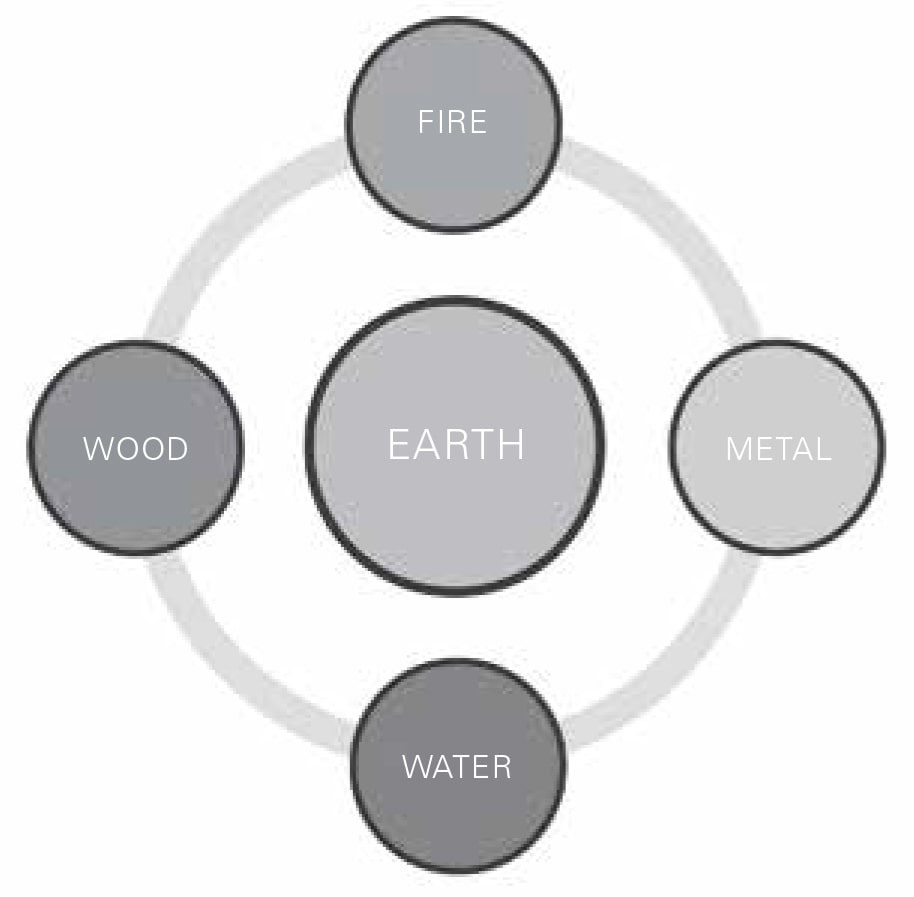 Figure 4. The Five Elements
Figure 4. The Five Elements
Through personal connection with nature and detailed observation of the seasons and the movement of the stars through the sky, the ancient Taoists understood all reality to be represented by five elements. These elements are related to material, emotional, and spiritual matters in that they represent the entirety of our experience on our planet. But it is always important to remember that they are all aspects of the One—that pure realm of consciousness that exists in an unpolarized state. Through differential emanation, the five elements create the flavor and richness of life and how it moves and expresses itself. Remember, before the separation into yin and yang, there was the formless and unified whole—the Tao. The split into yin and yang created movement. With yin and yang, there are two complementary and opposing forces that dynamically flux into one another. They create the dance of life. All things move and exist through this dance, as it is the very agent of the life force itself. Now, we have further differentiated into the five elements, which give life its flavor and richness. The table below shows a basic impression of these elements, the broad range of their correspondence with the world, and how they map our experience of nature and ourselves.
We will use many of these Taoist beliefs when we discuss how to troubleshoot problems with this framework and, more important, how to correct energetic imbalances using this system.
The five elements provide us with a greater degree of distinction on where any given thing, subject, or thought will be within its balance point of yin and yang. They show where the flow of energy is and how it is expressing at any given time, as shown in figures 4 and 5.
FIRE
Color: Red
Season: Summer
Internal Organs: Heart, small intestine
Direction: South
Emotion: Joy
Stage of Development: Growth
Virtues: Righteousness
Planets: Mars
Sense Organ: Tongue
Tissues: Vessels
Sound: Laughing
EARTH
Color: Yellow
Season: None
Internal Organs: Stomach, spleen
Direction: Center
Emotion: Pensiveness
Stage of Development: Transformation
Virtues: Faith
Planets: Saturn
Sense Organ: Mouth
Tissues: Muscles
Sound: Singing
METAL
Color: White
Season: Fall
Internal Organs: Lungs, large intestine
Direction: West
Emotion: Sadness
Stage of Development: Harvest
Virtues: Prosperity
Planets: Venus
Sense Organ: Nose
Tissues: Skins
Sound: Crying
WATER
Color: Blue, black
Season: Winter
Internal Organs: Kidneys, bladder
Direction: North
Emotion: Fear
Stage of Development: Storage
Virtues: Courage
Planets: Mercury
Sense Organ: Ears
Tissues: Bones
Sound: Groaning
WOOD
Color: Green
Season: Spring
Internal Organs: Liver, gallbladder
Direction: East
Emotion: Anger
Stage of Development: Birth
Virtues: Benevolence
Planets: Jupiter
Sense Organ: Eyes
Tissues: Sinew, tendons
Sound: Shouting
In the qi gong system, it is recommended that we stand facing the south for our practice. This explains why we diagrammatically place the fire element on top and water below. Assuming we are standing in the Earth position, facing south would put fire in front of us, with metal to our right, water behind, and wood to our left.
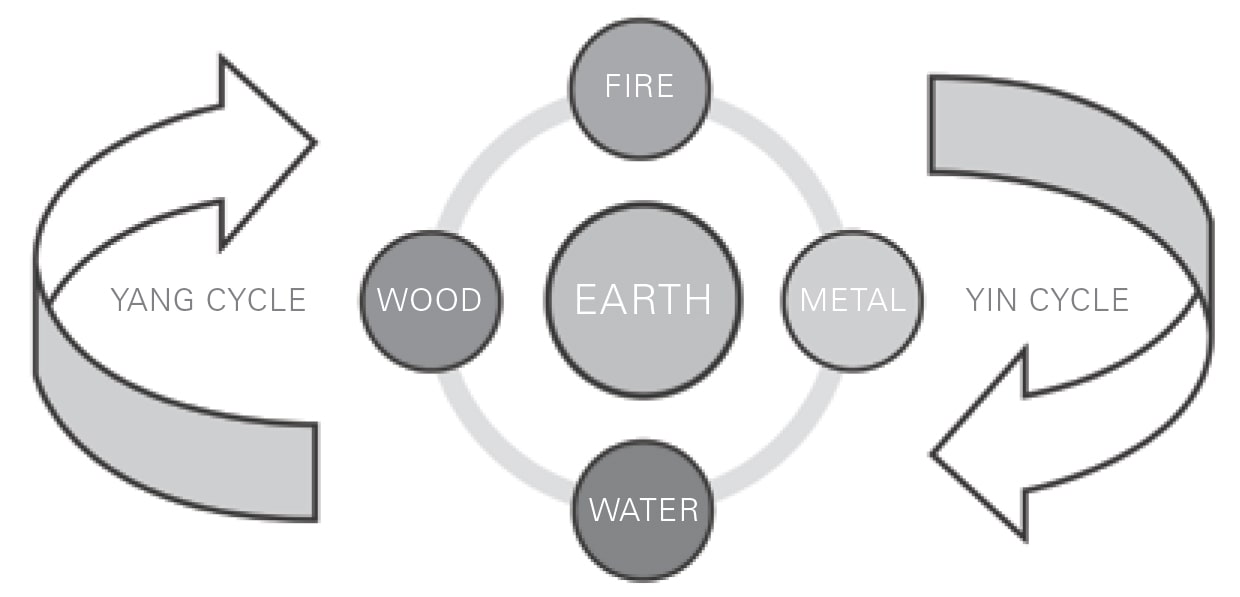 Figure 5. The Five Elements with Yin and Yang Movement
Figure 5. The Five Elements with Yin and Yang Movement
This particular representation shows the essential alignment of the elements but does not show the movement of these energies. When we introduce the principles of yin and yang to the equation, there is movement (through polarity), and we begin to see the cycles of nature manifest. We then have the four seasons.
The earth element represents the center around which all of the other elements revolve, and the seasonal elemental correspondences are closely tied to the increase and decline of energy in the annual cycle. The yang energy rises out of the winter, comes to a balance point in the spring, and is at its full expression in the summer before it begins to decline back through the fall and eventually to the cold, quiet stillness of winter. Similarly, the yin energy picks up at the summer solstice and gains momentum through the fall. It is at its height in the winter and then slowly fades through the spring as the yang energy comes up. This entire system is simply a circular spectral representation of the movement of yin and yang in nature. It is all the same phenomena. It has to be—there’s only one reality.
Now, this Taoism system is remarkably similar to many American Indian spiritual and medicinal traditions; in fact, with proper understanding, they can be used interchangeably. Nature is nature—period. Different cultures have evolved to understand and interpret its movement in a slightly different way, but we all understand what winter is, no matter where we are from. Of course, there is less fluctuation of these seasons at the equator (where the forces of yin and yang are more balanced), and there is more abrupt change at the poles.
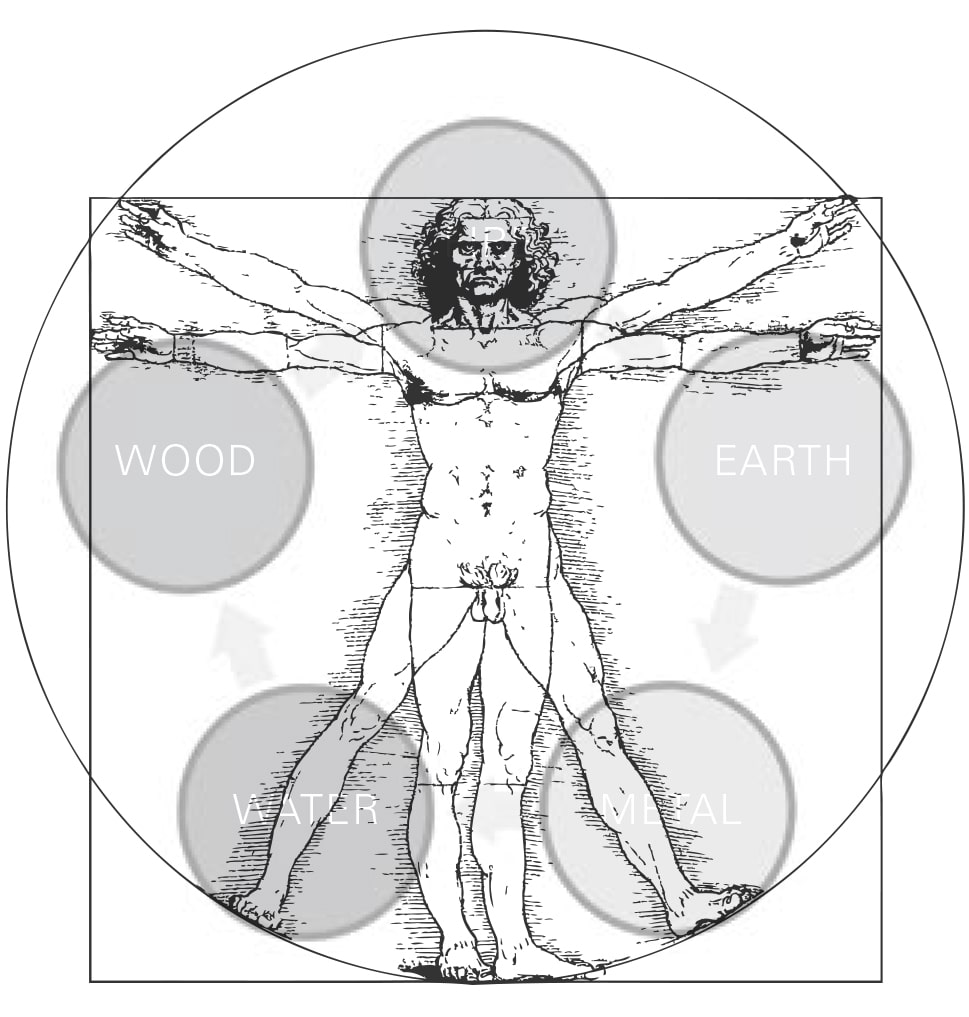 Figure 6. The Five Elements Overlaid on the Human Body
Figure 6. The Five Elements Overlaid on the Human Body
Figures 4 and 5 give us a relatively simple framework for understanding the five elements and their interactions with each other. They give us a reference point for our energetic practice, and they ground the entire system into something we can all relate to—nature. Now, there is another way to illustrate these correspondences that is quite useful in the realm of medicine and psychology. As shown in figure 6, we can overlay this elemental system on the human body, which the Taoists consider to be a microcosm of the entire universe, to show how these energies interact when it comes to humans.
The elements relate to each other in different ways. The generating cycle, illustrated in figure 7, comes from the Taoism philosophy that the energy of nature flows through a particular sequence in which each element is generated by another. Wood catches fire or decomposes and turns to earth, which over time settles to metal (minerals), which then returns to water (aquifer or rivers) and finally nourishes wood (plants and biomass) all over again. In this system, we call wood the “child” of water, and simultaneously, wood is the “mother” of fire.
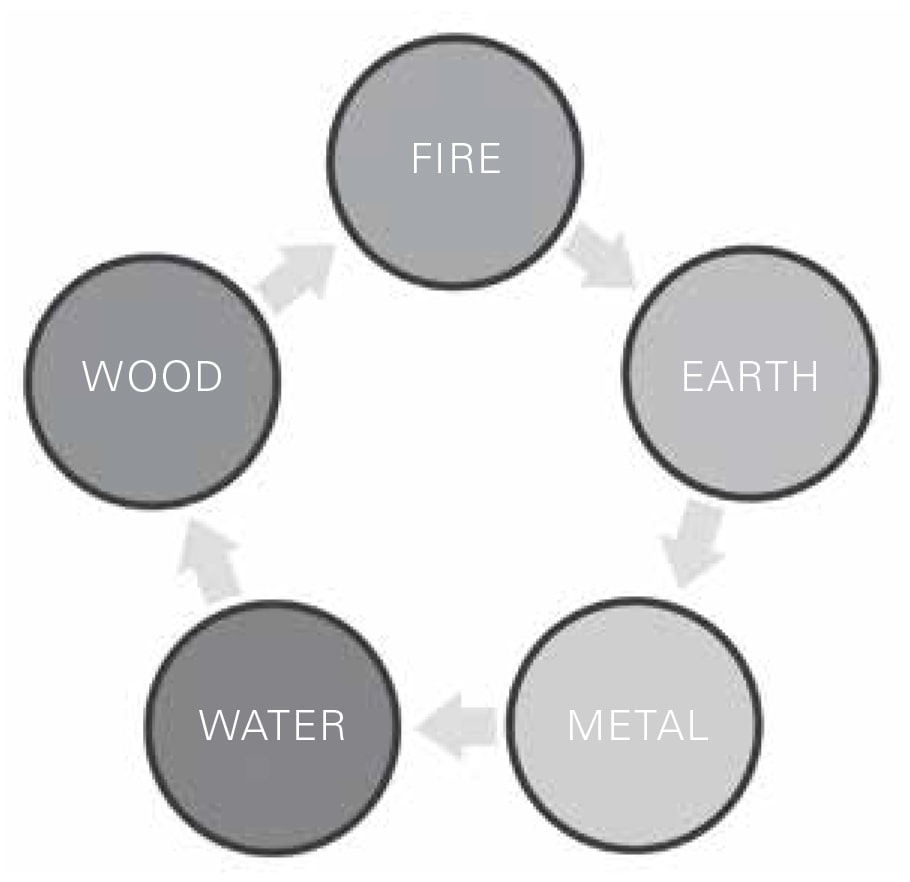 Figure 7. The Generating or Nourishing Cycle
Figure 7. The Generating or Nourishing Cycle
This system allows us to understand the proper sequence of our current situation and how that relates to the overall cycle of things. For example, say we are having digestive problems (earth) due to a weak system. We can obviously help bring energy to the earth element, which is the primary afflicted element, but we can also put energy “upstream” into the fire element, which will then naturally flow into the earth element. Along these same lines, maybe the metal element is what is really weak, and it’s draining energy out of the earth element “downstream.” In this case, we address the issue with the metal element, and the earth energy should fill back up naturally.
Teachings of Taoism highlight that in a cycle of life, a disharmony along any point in the circle has repercussions throughout the entire system. This applies to our mind, our body, our family, and our planet. The point is that everything applies to everything in the cycle of the elements, which is why we must constantly strive to maintain balance and harmony in everything we do.
The generating cycle (also called the nourishing cycle) helps us to see the correct flow of energy through the five elements and to understand how that energy pertains to us and our circumstances. This brings us back to the concept of basic awareness in all things. To properly perceive what’s going on around us, we need to look at the bigger picture and see the larger cycles of energetic movement that all things are related to. Only with this sort of bird’s-eye view can we understand the nature of our circumstances and help bring harmony to energetic cycles that are oftentimes larger than us.
Using the same basic framework and Taoist beliefs about the elements, there is one more relationship among the five elements that is important to understand, and that is the controlling cycle. This cycle, shown in figure 8, shows the “checking” or controlling functions of the elements and how they relate to each other.
In this sequence, wood controls earth, which in turn controls water, and so forth. This means that we can use a checking element to control another element that has excessive energy and is out of balance. For example, someone who is very stressed out has an overactive wood element (liver or gallbladder), which can be controlled by the metal element (lungs and large intestine). So, introducing energy into the metal organs can help control the overactive wood. This also works pathologically. Because the overactive wood element is out of control, it can easily exert a negative controlling influence on the earth element (stomach and spleen). We see this all too often in the modern world, where people who are chronically stressed out end up having digestive problems. In chronic conditions, in fact, the metal element gets drained because it’s constantly trying to exert control over the overactive wood element. Because of this, we also see a decline in the metal element, which oftentimes manifests as colds and flus (lungs) or constipation or diarrhea (large intestines).
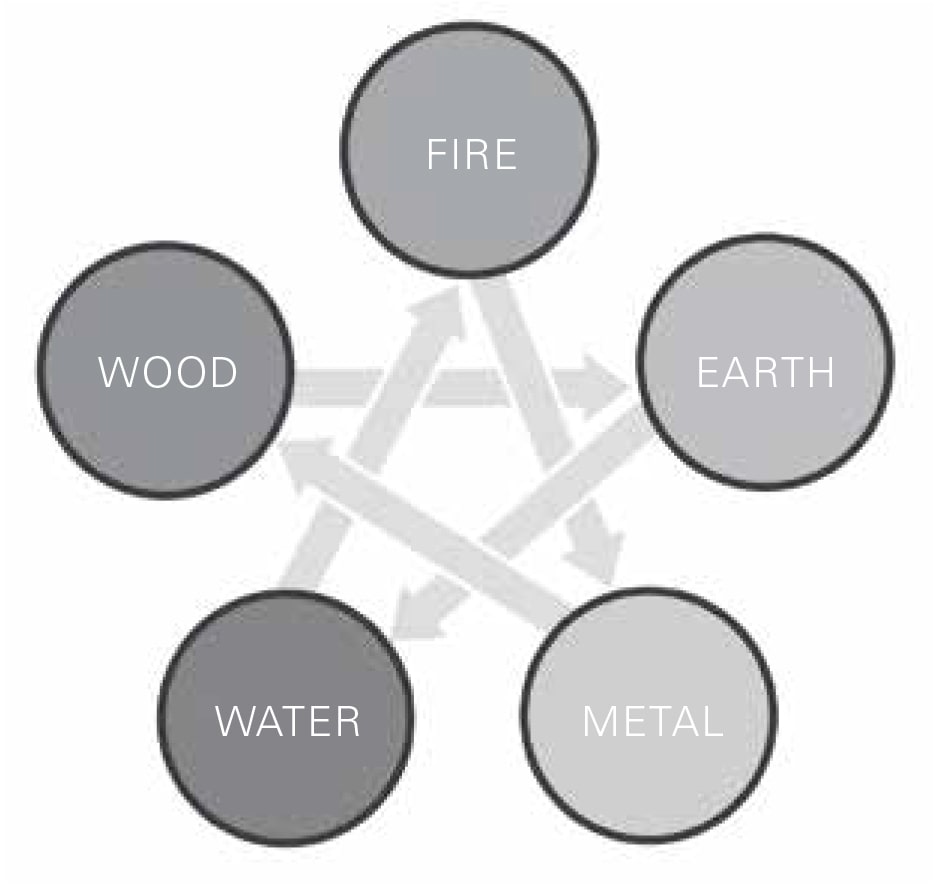 Figure 8. The Controlling Cycle
Figure 8. The Controlling Cycle
According to the teachings of Taoism, this controlling cycle is also very helpful in understanding the interplay of emotions and our mental health. For example, if a person is overcome by the emotion of fear (water element), then that element is over-controlling the fire element (joy) and draining that system as well. We can bring in some earth energy (faith is the positive virtue) to pacify the fear and breathe energy into the corresponding organs to see a radical change in that person. That is the basis of Taoist magic. The only way to learn this and to get it right is to assume that this mystery “person” is you. All healing must originate from within. As the grand master of my tradition often tells us: “First help yourself, then help the people.” Much of our internal nei gong (or inner alchemy) involves learning how to harmonize these elemental energies within ourselves and to really use our body and mind as the workshop to figure it out and get it right. Once we learn this, helping another person will be the natural extension of this skill. True, there is no separation, but most people will take that “abstract” notion and run with it. They will try to save the world without addressing their own energy first. In my experience, this is where most seekers in our modern culture fail. The central tenet of Taoist alchemy is to turn the light of awareness inward and to explore the universe within. From this infinity within, we are then able to unlock all the secrets of the outer world and understand our true nature. From within, we find heaven.
The Taoist way is one of peace, harmony, and honesty. It entails being aware of the cycles and currents of nature and living by those precepts. It demands that we bring the balance within ourselves to everything we encounter and to act spontaneously out of the living, breathing moment. This serves as the basic framework for our understanding of Taoism and the Tao philosophy.
Excerpted with permission from Inner Alchemy: The Urban Monk’s Guide to Happiness, Health, and Vitality by Pedram Shojai. Sounds True, January 2019. Reprinted with permission.
About The Author
Pedram Shojai, OMD, is the New York Times bestselling author behind The Urban Monk academy, mastermind program, podcast, and book. He is former Taoist monk, a Qi Gong master who has studied Kung Fu and Tai Chi for decades, and an accomplished physician of Chinese medicine. Pedram lectures and conducts seminars and retreats around the world on health and wellness within the context of modern life’s challenges. He lives in Southern California with his family. Learn more at theurbanmonk.com.


